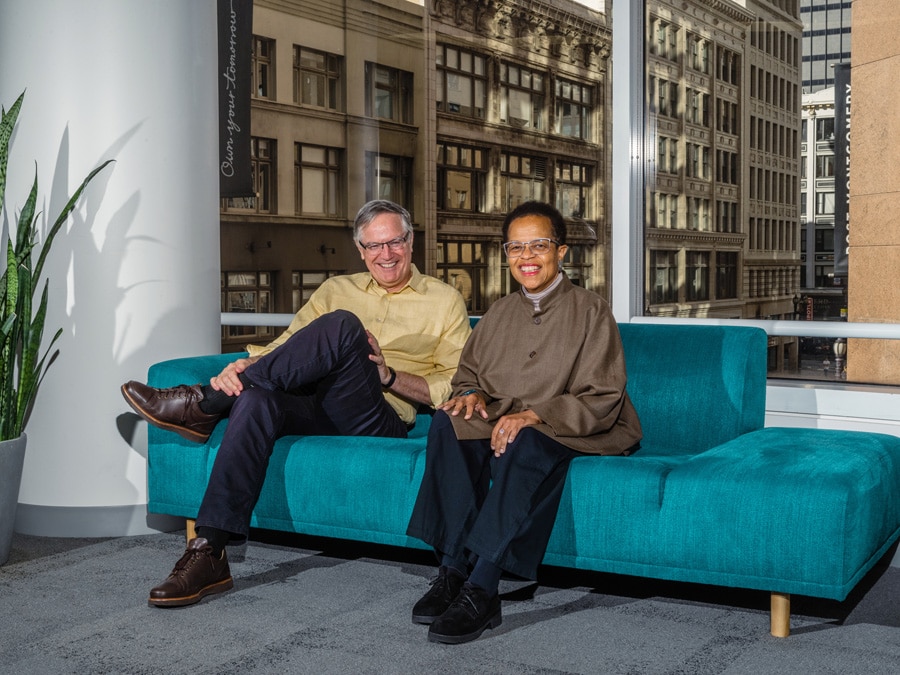
From MacKenzie Scott to Bill Gates: The consulting firm billionaires turn to when they give money away
Spun out of the consulting firm Bain & Company as a non-profit, The Bridgespan Group is hardly known outside philanthropic circles but highly influential within them, counting the Ford Foundation, Rockefeller Foundation, YMCA, and many more, as clients
 Jeff Bradach, one of Bridgespan’s founders, with Willa Seldon, one of the group’s partners, at offices in San Francisco, Nov. 11, 2021. A little-known organization called the Bridgespan Group is guiding the philanthropic choices of many leading donors, including MacKenzie Scott. (Kelsey McClellan/The New York Times)
Jeff Bradach, one of Bridgespan’s founders, with Willa Seldon, one of the group’s partners, at offices in San Francisco, Nov. 11, 2021. A little-known organization called the Bridgespan Group is guiding the philanthropic choices of many leading donors, including MacKenzie Scott. (Kelsey McClellan/The New York Times)
MacKenzie Scott stepped out of the long shadow of her former husband, Amazon founder Jeff Bezos, by handing out billions of dollars in grants over the past two years to charities, community colleges, food banks and progressive nonprofits led by people of color.
Advising her was a team of consultants at a firm that is hardly known outside philanthropic circles but highly influential within them: The Bridgespan Group.
Spun out of the consulting firm Bain & Company as a nonprofit, Bridgespan is one of a host of groups that arose in the early 2000s as a new wave of giving led by tech billionaires was beginning to crest. Two decades later, the consultants working behind the scenes are more important than ever.
Scott pulled back the curtain a bit in June — when among the 286 groups receiving more than $2.7 billion in donations were a host of organizations that are basically the plumbing and wiring of the nonprofit world. Among them were the Center for Effective Philanthropy, Charity Navigator and Bridgespan itself, which said it would use its gift mainly to pursue research meant to benefit the sector as a whole.
“We work with the nonprofits on classic kinds of strategic issues, getting clarity on what they’re trying to do, putting their resources to work,” said Imtiyaz Hussein, who goes by Taz and is a Bridgespan partner who leads the group’s nonprofit advising practice. “I frame the heart of what we try to do as providing decision-making support for organizations.”
©2019 New York Times News Service







